This blog post is a visual reflection of the current proposal, and works towards an overall typology of interorganizational dynamics.
Let us asume 5 ambitious persons, whose interests have a focus of technology, business and biology.
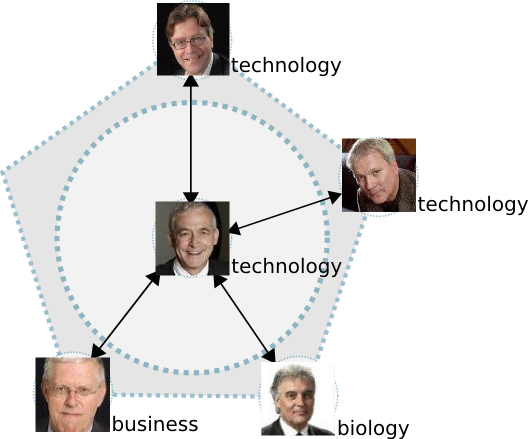
Suppose these persons are in fact Rectores Magnifici of (some of) the leading Universities in the Netherlands.
As described in Examples, the Delft University of Technology (DUT) building / consolidating on both a regional & cross domain level and a national & technological orriented level.

Note 2: the regional collaboration Delft-Leiden-Rotterdam does not yet have a logo, as far as I know. Therefore I use a common shared regional logo: the logo of the ‘Zuid-Holland’ province.
Let us asume there is a set of cooperations, visualized from the DUT perspective.
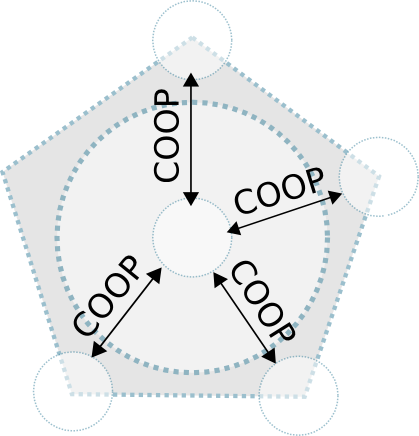
Beacuse of cooperation, there is competition as well. Running parallel paths (national + technological & regional + cross domain) can be an energy drain for an organization, as well as a mechanism to ensure robustness of the strategy.
It is unclear whether or not a strong regional alliance has a positive or negative effect on the 3TU-activities. And vise versa.
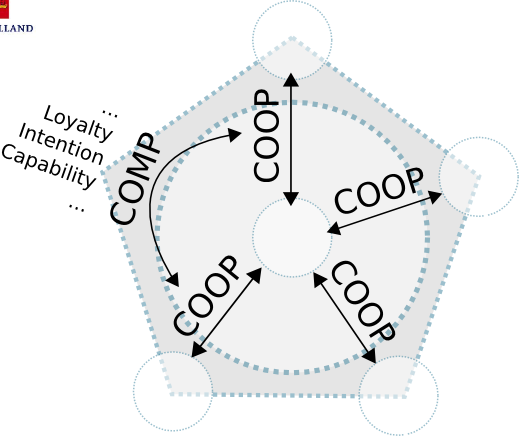
It is always good to try and split double headed arrows. As a result we find two types of interests: convergence and divergence. We can identify two supra local (above local) interests, both converging in on the DUT.
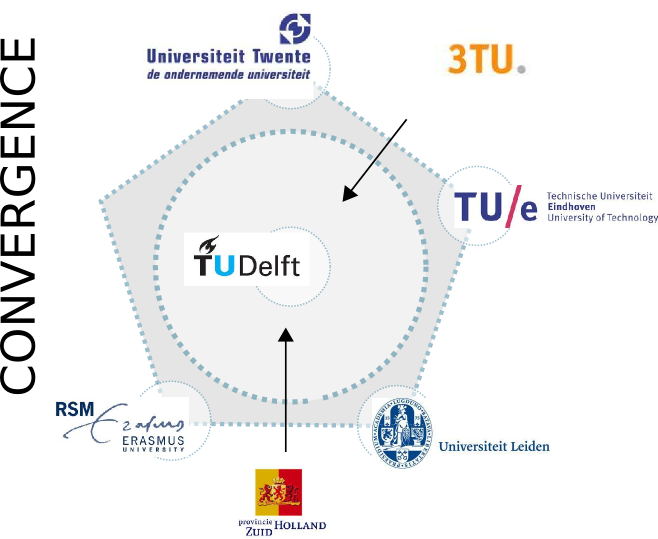
We can also identify four ‘cross local’ divergent activities: the DUT is connecting towards other local initiatives.
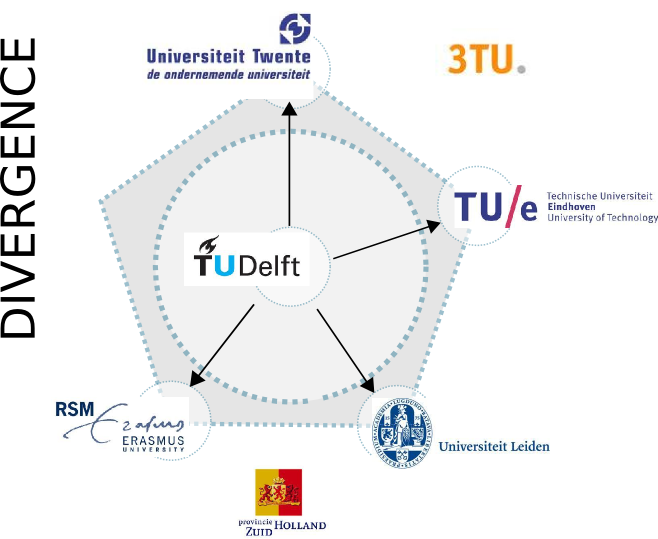
This example is from the DUT perspective. The local activities as well as the supra local activities in fact are all two way streets. The traffic does not have to meet in the middle and the reach of approaching traffic has an effect on the outgoing traffic. There is a delicate balance of loyaties, intentions and interests.
Within a complex context, people and organizations discover new processes. This is contradicting to complicated context, where a blue print or screen play can be created up front to guide individuals and organizations. During complicated situations a protective role of judical departments is more helpfull, whereas during complex situations an enabling role of objective advisers is better at hand.
This research aims at enlightening a multi actor, inter organizational context in which organizations have to deal with the lack of a single effective command. Such a context demands developing other capabilities of employees and offering a different support to those employees. Strengthening the effectiveness of decision making calls for an unambiguous get-the-pulse system, let alone because of the fact that today numuruous organizations are all at the same time inventing alliance dynamics.
There lies a common ground, a shared but hidden typology of dynamics: these dynamics deal with differentiation over time, place and reach, together with converging and diverging actions, interests, responsibilities, loyalties and intentions of both individuals and organizations.